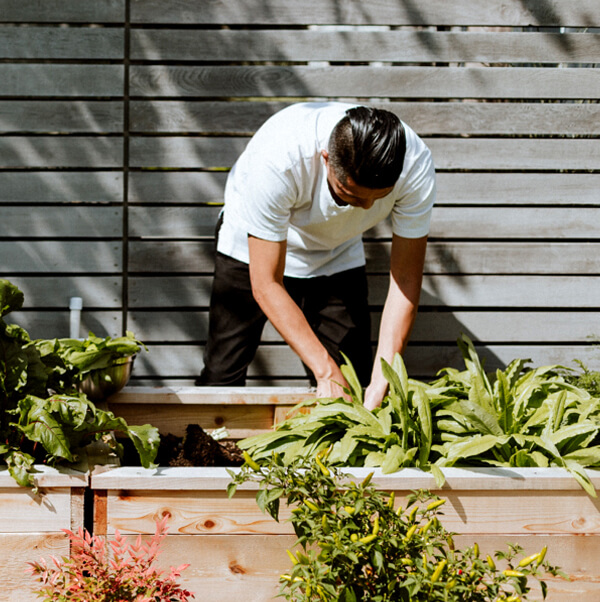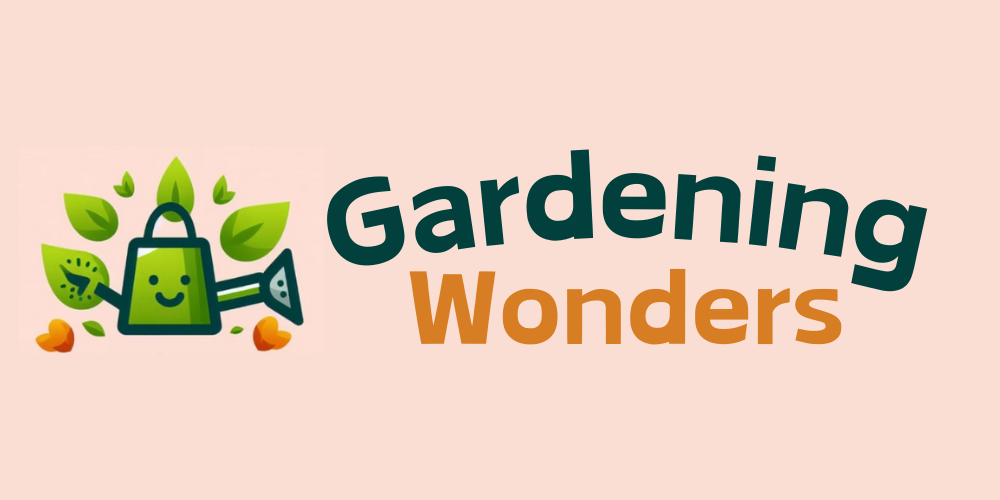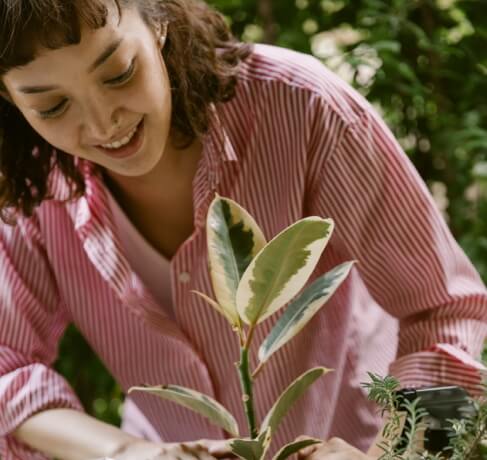Home gardening is an incredibly rewarding and enjoyable activity that can bring beauty, flavor, and nourishment to your outdoor space. Whether you have a large yard or a small balcony, there are countless plants that you can grow to create a lush and thriving garden.
From colorful flowers to delicious fruits and vegetables, there is no limit to the types of plants you can cultivate in your own backyard.
One of the most important aspects of home gardening is choosing the right plants for your space and climate.
The first step is to determine the amount of sunlight that your garden receives.
This will help you select plants that are suitable for your growing conditions.
Some plants, like tomatoes, peppers, and eggplants, require full sun to grow and produce fruit. Others, such as leafy greens and herbs, can thrive in partial shade.
Another factor to consider is the soil quality of your garden. Some plants, like blueberries and azaleas, require acidic soil to grow, while others, like lettuce and spinach, prefer soil that is rich in organic matter.
You can test the pH level of your soil to determine what amendments you may need to make to create optimal growing conditions for your plants.
When it comes to choosing specific plants for your garden, the options are virtually endless. Flowers can add color and beauty to any garden, and many varieties attract beneficial insects like bees and butterflies.
Popular flowers for home gardening include marigolds, zinnias, sunflowers, and daisies. In addition to being visually appealing, many flowers can also be used in cooking, such as lavender, chamomile, and nasturtium.
Fruit trees and bushes can also be a wonderful addition to any home garden. Apples, peaches, cherries, and plums are all popular fruit trees that can be grown in many regions.
Blueberries, strawberries, and raspberries are popular berry bushes that can thrive in both full sun and partial shade.
These plants not only provide a delicious and healthy source of fruit, but they also add visual interest and a touch of whimsy to your outdoor space.
Vegetable gardening is another popular and rewarding form of home gardening. Whether you are growing a few tomato plants on your balcony or a full vegetable garden in your backyard, there is nothing quite like harvesting fresh, home-grown produce.
Popular vegetables for home gardening include tomatoes, peppers, cucumbers, beans, lettuce, and carrots. Many of these vegetables can be grown in containers, making them an ideal option for those with limited outdoor space.
Herbs are also a great addition to any home garden.
Whether you are an avid cook or simply enjoy the scent of fresh herbs, growing your own herbs can add both flavor and fragrance to your outdoor space. Popular herbs for home gardening include basil, mint, rosemary, thyme, and sage.
In addition to being a fun and fulfilling hobby, home gardening can also have numerous health benefits. Gardening is a form of exercise that can help you stay active and promote physical fitness.
Additionally, spending time outdoors and connecting with nature has been shown to reduce stress, boost mood, and improve overall well-being.
There are many reasons why someone might choose to start a home garden, including:
Fresh and healthy produce: Homegrown fruits, vegetables, and herbs are typically much fresher than store-bought produce, and they often contain more nutrients as a result.
Cost savings: Growing your own produce can be a cost-effective way to get fresh food, especially if you have access to free or low-cost seeds or plants.
Sustainability: Growing your own food is a sustainable practice that can reduce your carbon footprint and help protect the environment.
Physical activity: Gardening can be a great form of physical activity that gets you outside and moving, which can have numerous health benefits.
Stress relief: Gardening can be a calming and relaxing activity that helps to reduce stress and improve overall well-being.
Educational opportunities: Gardening can be a great way to teach children about nature, the environment, and healthy eating habits.
Beauty and aesthetics: Home gardening can help to beautify your property and create an attractive outdoor space.

Fresh and healthy produce: Home gardening provides an opportunity to grow a variety of fruits, vegetables, and herbs that are usually fresher and more nutritious than store-bought produce. When you grow your own food, you have control over the way it’s grown, including the type of fertilizers and pesticides used, and you can pick it at the peak of ripeness, which results in more flavorful and nutritious produce.
Cost savings: Home gardening can be a cost-effective way to get fresh food. You can save money by growing your own produce instead of buying it at the grocery store. Additionally, once you’ve established a garden, you can save money on seeds or plants by saving seeds from your own crops and by propagating plants through cuttings.
Sustainability: Growing your own food is a sustainable practice that can reduce your carbon footprint and help protect the environment. By growing your own food, you’re reducing the distance your food has to travel to get to your table, which means fewer greenhouse gas emissions from transportation. Additionally, home gardens often use organic growing practices, which can help to reduce the amount of harmful chemicals that end up in the environment.
Physical activity: Gardening can be a great form of physical activity that gets you outside and moving, which can have numerous health benefits. Digging, planting, weeding, and harvesting all require physical exertion, which can help to improve cardiovascular health, strengthen muscles, and reduce the risk of obesity.
Stress relief: Gardening can be a calming and relaxing activity that helps to reduce stress and improve overall well-being. Spending time in nature has been shown to have numerous mental health benefits, including reduced anxiety and depression symptoms, improved mood, and increased feelings of well-being.
Educational opportunities: Home gardening can be a great way to teach children about nature, the environment, and healthy eating habits. Gardening can help children develop an appreciation for the natural world and an understanding of how food is grown. It can also teach them about the importance of sustainability and environmental stewardship.
Beauty and aesthetics: Home gardening can help to beautify your property and create an attractive outdoor space. Well-tended gardens can improve curb appeal and increase property value. Additionally, being surrounded by natural beauty has been shown to have a positive impact on mental health and well-being.
While home gardening can be a rewarding experience, there are also some challenges and difficulties that you may encounter, including:
Limited space: Depending on where you live, you may have limited space for gardening. This can be especially challenging if you’re trying to grow a large number of plants or if you’re growing plants that require a lot of space, such as fruit trees or large vegetables like pumpkins.
Soil quality: The quality of your soil can greatly affect the health and productivity of your plants. If you’re gardening in an area with poor soil quality, you may need to amend the soil with organic matter or fertilizer to improve its nutrient content.
Climate and weather conditions: The climate and weather conditions in your area can greatly affect the success of your garden. If you live in an area with extreme temperatures or harsh weather conditions, such as drought or heavy rainfall, you may need to take extra precautions to protect your plants.
Pests and diseases: Plants are susceptible to a variety of pests and diseases, which can damage or kill your crops. Common pests include aphids, snails, and slugs, while common diseases include powdery mildew and blight.
Time and effort: Gardening requires a significant amount of time and effort, especially during planting, harvesting, and maintenance. Depending on the size of your garden and the number of plants you’re growing, you may need to spend several hours a week tending to your crops.
Cost: While home gardening can be a cost-effective way to get fresh produce, there are also costs associated with starting and maintaining a garden. These costs may include purchasing seeds or plants, soil amendments, gardening tools, and irrigation equipment.

